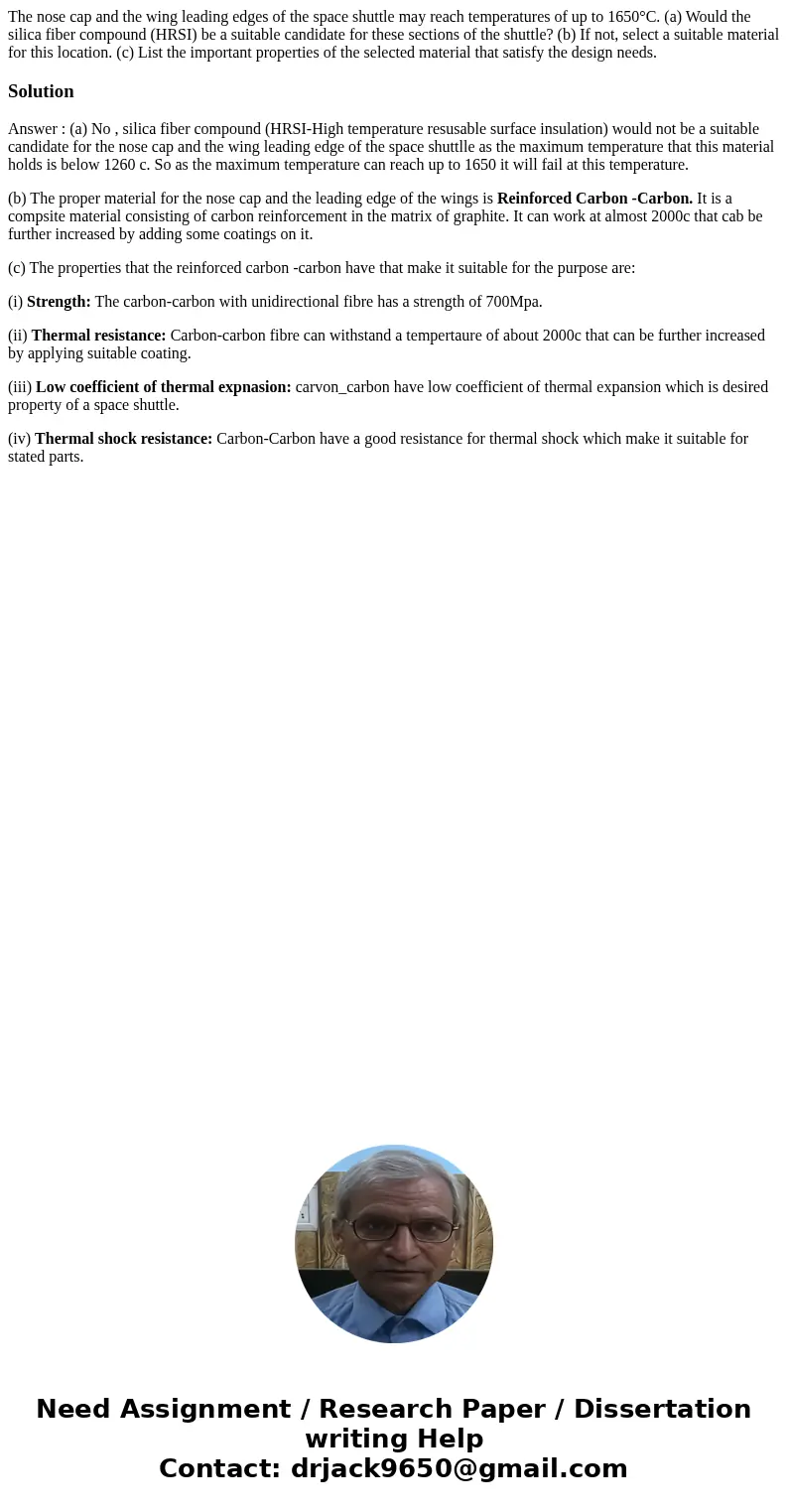The nose cap and the wing leading edges of the space shuttle
The nose cap and the wing leading edges of the space shuttle may reach temperatures of up to 1650°C. (a) Would the silica fiber compound (HRSI) be a suitable candidate for these sections of the shuttle? (b) If not, select a suitable material for this location. (c) List the important properties of the selected material that satisfy the design needs.
Solution
Answer : (a) No , silica fiber compound (HRSI-High temperature resusable surface insulation) would not be a suitable candidate for the nose cap and the wing leading edge of the space shuttlle as the maximum temperature that this material holds is below 1260 c. So as the maximum temperature can reach up to 1650 it will fail at this temperature.
(b) The proper material for the nose cap and the leading edge of the wings is Reinforced Carbon -Carbon. It is a compsite material consisting of carbon reinforcement in the matrix of graphite. It can work at almost 2000c that cab be further increased by adding some coatings on it.
(c) The properties that the reinforced carbon -carbon have that make it suitable for the purpose are:
(i) Strength: The carbon-carbon with unidirectional fibre has a strength of 700Mpa.
(ii) Thermal resistance: Carbon-carbon fibre can withstand a tempertaure of about 2000c that can be further increased by applying suitable coating.
(iii) Low coefficient of thermal expnasion: carvon_carbon have low coefficient of thermal expansion which is desired property of a space shuttle.
(iv) Thermal shock resistance: Carbon-Carbon have a good resistance for thermal shock which make it suitable for stated parts.

 Homework Sourse
Homework Sourse